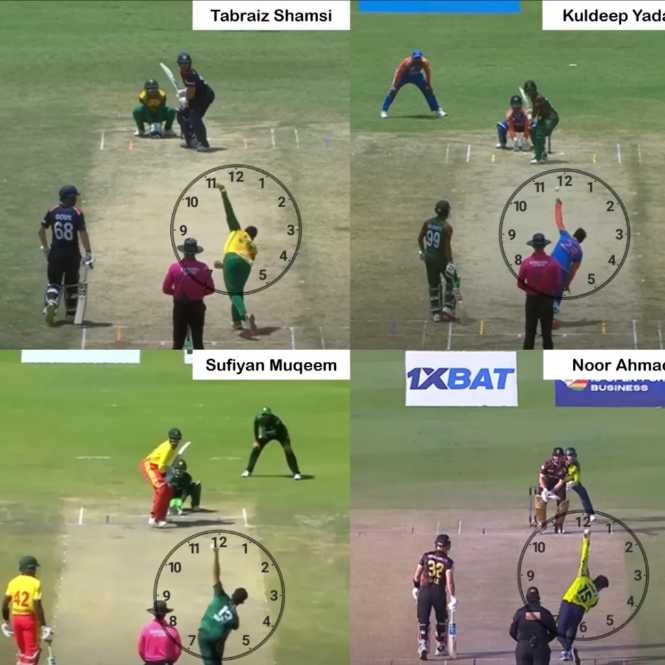In the second T20I against Zimbabwe in Bulawayo last week, Muqeem took astounding figures of 5-3 in 2.4 overs to bowl the hosts out for just 57. In doing so, he recorded the best-ever figures by a Pakistani bowler (man or woman) in T20Is, breaking Umar Gul’s record of 5-6.
His experience in T20 cricket is limited, with just 17 matches to his name so far – eight of them for Pakistan. He has 15 wickets for the senior national team, another six for Pakistan’s ‘A’ side, the Shaheens, and just four in the Pakistan Super League, which is one of the more natural steps towards national selection in the shortest format.
With 15 wickets in his first eight T20Is, it’s as close as a bowler can get to bursting onto the scene, in this most unforgiving of formats. Only four bowlers from Full Member nations can claim to have a better strike rate across their first eight T20Is than Muqeem’s 10.3 balls per wicket – Nathan Ellis, Ajantha Mendis and Qais Ahmad.
Of these three, Mendis was a mystery spinner in the early days of T20 cricket and Ellis bowled a large chunk of his overs at the death, helping boost these figures somewhat.
Muqeem has neither of these advantages. What is it then, that has made him so effective?
Sufiyan Muqeem – unique in multiple ways
Number one is quite simply his bowling style. Muqeem is a left-arm wrist spinner, a bowling type still extremely rare and unfamilair to batters in all forms of cricket today. He is Pakistan’s first bowler of this type of any real note, and it’s this variety that has helped fast-track him through the domestic system up to the PSL, Shaheens set-up and the national team.
But even beyond that, Muqeem’s action makes him unique among others of his type – Tabraiz Shamsi, Kuldeep Yadav and Noor Ahmad are three on the international circuit today.
Shamsi and Kuldeep are more conventional in their action and approach. Both have an almost languid delivery action, with their bowling arm away from the head and enabling them to spin the ball hard and give it air, in classical fashion. Lining them up with a clock face, both have their bowling arms betwen 11 and 12 o’clock at the point of release.
Noor is unique in that he goes past the perpendicular, delivering from beyond 12 o’clock which can be a terribly awkward angle for batters to face. Muqeem lies in between these two angles, the closest of the four to a release from 12 o’clock.

This angle of release gives Muqeem two advantages. Compared to Shamsi and Kuldeep, this makes it more difficult for him to toss the ball up – something spinners in the modern T20 game are trying to move away from. Instead, since he delivers from very close to the highest possible point he can reach, the trajectory of the ball is always heading down.
This means getting under the ball to hit it high and far, or sweeping become more difficult options.
Noor also has the advantage of not giving the ball a lot of air. His more exaggerated release often works in his favour, but it does give batters an angle to work with – across the right hander and into the left-hander, which can sometimes give the opposition some clarity on where to attack him.
Muqeem’s almost gun-barrel straight release means this angle is also taken out of the equation, making any kind of pre-meditation dangerous from a batter’s point of view.
Without premeditation or the sweep shot, batters who struggle with reading spinners from the hand are at a real disadvantage when facing Muqeem. He can then send down a mix of leg breaks and googlies at will, and they are then left with very few run-scoring options.
Muqeem isn’t a spinner who would be classified as a traditionally attacking bowler – he doesn’t dismiss batters by enticing them to play shots. Rather, his natural style enables him to keep a lid on the runs, which in turn forces batters to take more risks than they normally would, something Indian great R Ashwin has previously suggested should be the way forward in the shortest format.
His sternest test will come this week, in a three-match T20I series against a South African batting lineup that boasts hitters of the quality of Heinrich Klaasen and David Miller. If he can pass this examination, it could end up being the start of something truly special on the international stage.











Leave a Reply